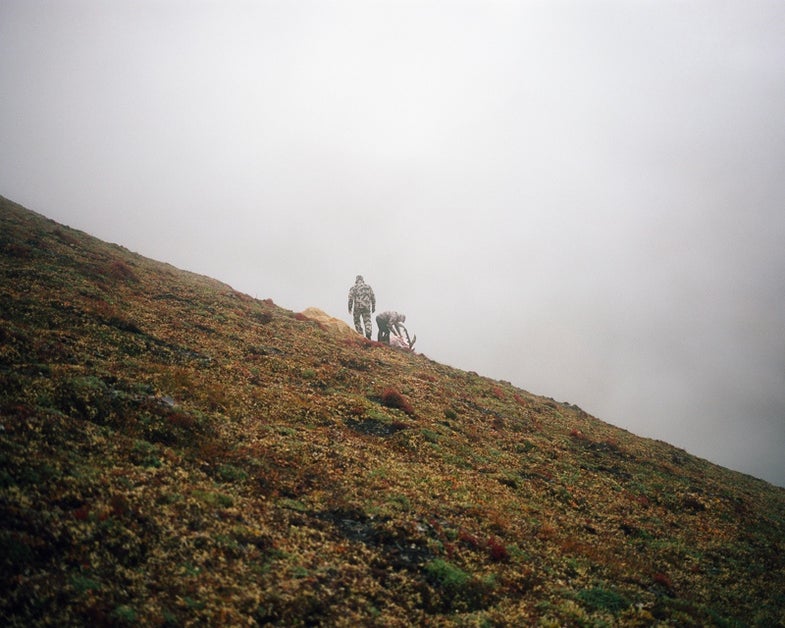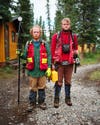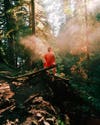A Look at Yonder Journal, Where Advertising and Documentary Photography Meet
Getting paid to make photographs is hard. It always has been, but the last fifteen years have been especially so....













Getting paid to make photographs is hard. It always has been, but the last fifteen years have been especially so. Here in 2013, this difficulty is rarely if ever disputed. Our interview column on how photographers make a living proves this out in every installment.
What does often warrant some discussion and argument between photographers is the idea that, hey, surely the internet has created at least a few new opportunities to make money in the process of changing or fully erasing some of the old ones. So, what are they?
Emiliano Granado and Daniel Wakefield Pasley’s Yonder Journal, an outdoor-focused website publishing photo-illustrated guides and wilderness “studies” is looking to take a stance in that discussion: Yes, in today’s publishing and marketing environment, writers and photographers can find a way to support their own projects financially. Granado, a commercial and editorial photographer, and Pasley, a writer and photographer, founded Yonder Journal with a relatively down-to-earth goal—they were seeking the means to support the kinds of portfolio-building personal projects they were interested in doing anyway. Both have experience with the advertising world and the “brand” side of the equation—Granado’s portfolio includes work for brands like Converse, Fjallraven, and Outlier, and Pasley worked as a sales representative for a variety of outdoor gear and clothing brands.
It’s this network of outdoor brands that Granado and Pasley approached seeking “underwriters” for their various photo trips and expeditions. The brands are given a mention at the bottom of each page, and also have the opportunity to use the images Granado and Pasley produce in their own online marketing or on social networks. The gear the brands contribute to the project will certainly be worn by Granado and Pasley’s traveling partners in the photographs, but not necessarily exclusively.
](https://www.popphoto.com/uploads/2019/04/12/46Q6VDXWURMLZQ3OWDGU3SBO44.jpg?auto=webp&optimize=high&width=100)
From Yonder Journal
The process is pretty “loose” at the moment, Granado says—some brands donate gear only, others will write a check. The operation is not fully supported by these underwriters (“we’re definitely investing our own resources”), but just about each of the guides published so far—covering swimming holes, hot springs and mountain lookouts in Oregon, as well as a hunting expedition to the wildlands of the Canadian Northwest Territories—has an underwriter listed. The Northwest Territories trip—clearly the most ambitious and expensive of the pieces Yonder has published thus far—is listed as being fully supported financially by the hunting gear brand Kuiu. In the first of a three-part piece on the Arctic hunting expedition, Pasley writes that the expedition “costs roughly $35,000 not including various trophy and shipping fees.”
“All the things we do are based on the fact that we want to do certain projects, and there’s not necessarily a magazine or direct outlet for them. There are no resources for those projects to happen unless they’re personal. So we wanted to figure out a way to make personal projects into paid projects,” Granado says.
I had assumed that the money brands are making available to underwrite a Yonder Journal guide would have been redirected funds from print or online display advertising—markets that are both in sharp decline. But Granado says brands aren’t gravitating toward less conventional spends like Yonder Journal out of a concerted effort to re-allocate their advertising budgets. Rather, many of the brands Yonder Journal have worked with are still searching for their footing online in a similarly ad-hoc fashion.
“We’re selling the idea that we’re going to tell this story. The brand gets to have access to the photo library, and the social media clout, and most importantly the ability to say something new,” Granado says. In the end, underwriting a Yonder Journal project is being positioned as a relative bargain. “Knowing what I know about advertising photography and creative fees, it’s really hard to get professional photography for anything less than $10,000. So I think it’s a great deal.”
](https://www.popphoto.com/uploads/2019/04/12/VCXISMJBV35GNZWK6QLPKYJ6GM.jpg?auto=webp&optimize=high&width=100)
From Yonder Journal
And yet, the photos themselves can live in this relatively new and uncharted space—a hybrid of personal, documentary work and traditional advertising photography. In the end, the work we see on Yonder Journal is largely of attractive people enjoying themselves and meeting interesting people while adventuring in beautiful outdoor settings—certainly a subject matter that has inspired plenty of successful photography in the past. The trick, of course, is maintaining the appearance of the former while being paid like you would for the later. It’s Granado’s hope that those two motivations will eventually merge together, creating more natural work that also serves a marketing role. Gone are the catalog shoots with models wearing clothes from a single brand; replacing them are photos in a more natural setting, where hikers may not be fully kitted out in a single outfitter’s gear, but that outfitter would still be inclined to use the photos on their Instagram account, even though a competitor’s clothes may also be visible.
“We’re in a new world, where brands can play together seamlessly in a real way,” Granado says. “Catalog shoots are over, in many ways—things shouldn’t look like marketing, but they are.”
Whether this world sounds like a welcome change or a capitalist nightmare will certainly depend on your perspective. But for now, photographers like Granado and Pasley are making the most of it:
“If someone said, ‘Hey, we need your style of storytelling and photography for our brand. We’re JEEP, and we’ve got $80,000 for you for this project,’ we’d be like, cool. But we’re not actively courting this kind of thing,” Granado says. “I would go on vacation with some of these people [we’re traveling with] without any problem. We both enjoy ourselves a lot on these trips, and the added bonus to be creating content we think is entertaining and engaging, and making photographs we think are cool, is a great bonus.”